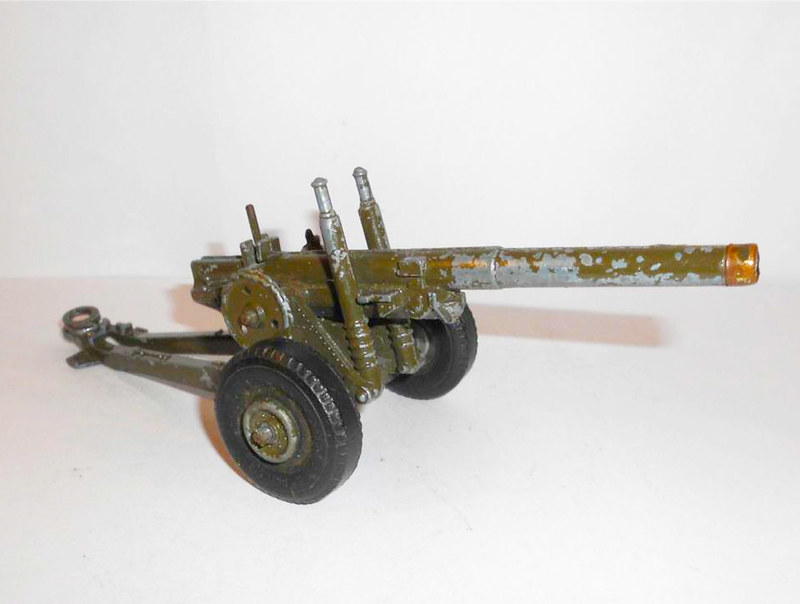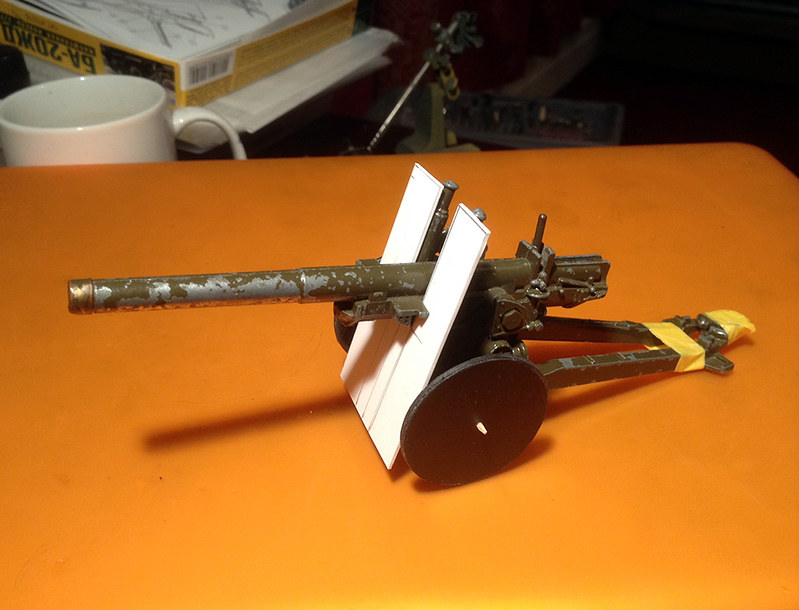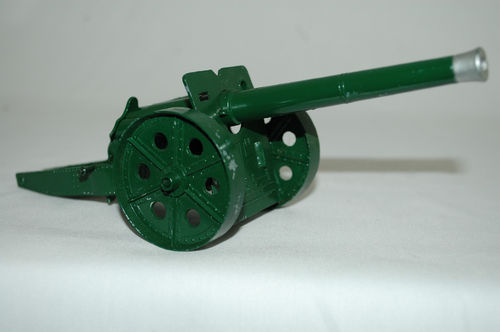Today I am starting to consider how I might add a battery of heavy artillery on the field. Usually the avid FLW exponent would by default turn to the famous Britains' 4.7 inch Naval Gun toy. It was H.G. Wells' favoured 'weapon' on the playroom battlefield and it holds a rather hollowed place among those that use his rule set. But today a authentic 4.7 model will set you back a tidy sum as they are being snapped up by collectors.
 So I decided to try and come up with a cheap and cheerful alternative to the venerable 4.7. I soon discovered the Cresent Models 5.5 inch British artillery piece, another die cast toy but one that does not have the charm and charisma of Britains' masterpiece.
So I decided to try and come up with a cheap and cheerful alternative to the venerable 4.7. I soon discovered the Cresent Models 5.5 inch British artillery piece, another die cast toy but one that does not have the charm and charisma of Britains' masterpiece.The 5.5 gun can be picked up for a pitance - compared to the 4.7 - on eBay and there are plenty on offer in a variety of conditions. My only stipulation was that the firing mechanism was in a working condition and I soon won one at a very reasonable price.
Now the 5.5 is a relatively modern gun compared to the 4.7 (which historically dates back to the late 1880s) so I realized that if I were to pass my model off as an Edwardian artillery piece I would have to disguise it somewhat.
First thing to go were the very modern looking rubber tyres and thier wheels. An easy job that only entailed my pinching the end of the axel so that the steel pin that formed the axel slid through the retaining holes. Job done (nice easy start)!
To replace the 5.5's wheels I wanted to create something more fitting to the period (pre-WW1) and have something that was a little larger. I also wanted to add a gun shield, to hide the huge spring posts and add to the 'antiqued' look.
None of what I am doing is irreversible so that - if I wish to - I can turn my faux-4.7 back into it's original 5.5 self. The upshot of my rough and ready prototyping is this...
Now this is, of course just a very elementary 'proof of concept'. I wanted to check what size of wheels I could get away with and also to see how I might affix a shield without obstructing the ability to elevate the gun. I also taped the gun's tail supports together and intend to box them up with plasticard to give a more '4.7' looking carriage to my model.
Naturally, once I am satisfied that I have the proportions that I am looking for in my add-on components I will craft some new parts which have a bit more detail and realism to them. But even at this point I think my additions have change the character of the gun slightly.
I think I can get away with slightly larger wheels and my final versions of these will either have a spoked arrangement or a 'solid' design like the Britains' 4.7 gun has...
Above: The real thing -Photograph showing British QF 4.7 inch gun on the improvised
wooden field carriage designed by Captain Percy Scott. In action at the Battle of Colenso, South Africa, 15 December 1899. Source: Wikipedia
Above: The famous Britains' model number 1264. 4.7 Naval Gun. This die cast toy
was in production for some 60+ years, from 1905. It went through several versions, the
mechanism being improved and honed.
was in production for some 60+ years, from 1905. It went through several versions, the
mechanism being improved and honed.



No comments:
Post a Comment